Competing for Miss Aloha Hula title requires dedication, research, sweat and ‘leading with heart’
Two years ago, Tehani Kaleohoneonālani Barrett skillfully emulated the goddess Pele as she seemingly sled across the Merrie Monarch stage solo to a mele written by her late, beloved kumu hula Johnny Lum Ho.

Barrett, then 23, was the last dancer Lum Ho chose to compete for the coveted Miss Aloha Hula title before he passed in April 2022. She also was the first to represent his legacy hula school, Hālau Ka Lehua Pua Kamaʻehu, under the direction of nā kumu hula Kasie Puahala Kaleohano, her godmother, and Brandi Nohelani Barrett, her mother.
“I felt so honored and was shocked when he chose me,” Tehani Barrett said. “It was really sad and hard when he passed. I grew up in the hālau and it has always been so important to me, but I was honored to be able to do that for him on that stage.
“And then, to be the first participant in the hālau run under my mother and my godmother was a very crazy experience. I wish I could put it into words, but there’s a lot of emotion there.”
Each year, the prestigious Miss Aloha Hula contest begins the competition portion of the Merrie Monarch Festival. This year, 13 participants (see list below) will compete for Miss Aloha Hula, which will take place on Thursday at the Edith Kanakaʻole Multi-Purpose Stadium in Hilo.
The Miss Aloha Hula contest began in 1971 when Dottie Thompson, the volunteer executive director of the Merrie Monarch Festival, took the advice of kumu hula across the state and introduced the individual and group hula competitions eight years after the first festival.
The organizers wanted to replicate what King David Kalākaua had done by bringing the best hula dancers from around the islands to perform and share the quality and authenticity of hula at the time, according to the Merrie Monarch Festival website.
Miss Aloha Hula traditionally opens the competition portion of Merrie Monarch on Thursday night with individual wāhine (female) dancers performing a hula kahiko with a chant done in ʻŌlelo Hawaiʻi (Hawaiian language), followed by the second round of hula ʻauana (modern hula). The results are announced the same night.

For hula kahiko, the participants must perform an oli (chant), kaʻi (entrance), mele (song) and hoʻi (exit) within the 7-minute time limit. No microphones are used for the oli, and minimal makeup is applied. Hula ʻauana is more of an informal style of hula, accompanied by songs and Western-influenced musical instruments.
Each hālau may submit one wahine contestant who is 18 to 25 years old and unmarried. Individuals are judged similarly to the hālau and evaluated by the oli and ʻŌlelo Hawaiʻi, the entrance and exit, the costuming and lei, and most importantly, the kumu’s interpretation of the mele and how well the dancers interpret their kumu’s vision of the performance.
Lum Ho was one of the kumu in the first Merrie Monarch competition in 1971 and has been well known in the world of hula for his style of dance. He made his final trip to the festival’s competition stage in 2018, and before he passed away in April 2022, he said he was preparing his hālau, Hālau O Ka Ua Kani Lehua, for the 60th competition in 2023.
This was when two of his students, Kaleohano and Brandi Barrett, took on the challenge by continuing what he started in 2022 for the next Merrie Monarch Festival with Hālau Ka Lehua Pua Kamaʻehu. This included working with Tehani Barrett in her pursuit of Miss Aloha Hula.

For her hula kahiko, Tehani Barrett chose Lum Ho’s “E Mele no Kahāwali,” which tells the story of the goddess Pele and a hōlua (lava sledding) race against Kahāwali, a chief of Puna. Disguising herself as an old woman, Pele challenges Kahāwali and he ultimately wins the race. His speed allows him to narrowly escape her wrath, unlike the spectators watching from the sidelines.
“In Uncle Johnny’s hālau, we get creative and use our imagination to tell the story in each dance,” she said. “His style is what made him so unique in the hula world, and my mom and Aunty Kasie have continued to carry that on, which I am thankful for.”
Tehani Barrett said she had to get into the mindset of Pele, the aliʻi and the old lady she turns into.
“I think this helps me to connect to the audience and helps me bring the story to life,” she said.
After dancing solo for many years and watching others in the competition, Tehani Barrett knew the Miss Aloha Hula process would require months of physical and cultural preparation.
“Hula is hard on your body, but you cannot show any pain on your face,” she said. “You have to look graceful and act out the part in the story you’re telling while keeping technicality and timing in mind as well. I think people forget that hula is a sport.”
It also is important to study and understand the story that is being told.
“For me, I was always on my phone doing research,” Tehani Barrett said. “Sometimes it takes going to a certain location every week and just putting yourself in the mindset of these different characters youʻre portraying.”

Hula kahiko is typically accompanied by one or two kumu hula who will mele and play traditional instruments, such as the ipu (gourd drum), so Brandi Barrett was able to be on stage with her daughter during her first dance.
“It was hard for me to sit and enjoy watching her like a mother would, to be honest,” she said. “I was excited and nervous for her, but I also wanted to make sure I could still do what I needed to do as a kumu. I can’t even describe the experience. I was happy she got the opportunity and was chosen by our kumu. She made us proud.”
Kaleohano added: “The familial ties can add to the pressure, but it also gives you strength to keep pushing through. I think knowing she was Uncle Johnny’s choice helped remind her she was supposed to be there. She was the first representative for our hālau, which wasn’t even two years old yet. She handled it well and showed everyone that we were not going to depart from Uncle Johnny’s style.”
While it took dedication and a lot of time, Tehani Barrett knew that the practice and research, along with the blood, sweat, and tears she shed, would culminate into one night that would leave a profound mark on her life.
“It doesn’t matter how fast my heart is beating, or how anxious I am, I snap into it the moment I step on stage and [Merrie Monarch] was a feeling I can’t describe,” Tehani Barrett said. “You feel the support from your family and your hula sisters, you connect with the audience, and then remember why you are doing it in the first place. Hula is my passion. Itʻs what Iʻm best at. And, I will never forget that night.”
Although she did not place, Tehani Barrett looks back on the experience with nothing but joy and gratitude.

Last year, Chianti “Kiki” Kamailekaluhea Motta was chosen as the second Miss Aloha Hula participant for Hālau Ka Lehua Pua Kamaʻehu at the 2024 Merrie Monarch Festival, where she celebrated her personal love of surf during her hula kahiko and honored her home, Keaukaha, during her hula ʻauana.
“When Kiki chose her mele, she based it on her passions, which made everything even more special for her,” Kaleohano said. “When dancers can use the things they cherish during the competition, those connections help them better portray the hula and the message of the mele.”
For both wāhine, the greater Hālau Ka Lehua Pua Kamaʻehu ʻohana helped them by practicing their ʻŌlelo Hawaiʻi with them, encouraging them during rehearsals, or picking foliage for their lei.
“Everyone who participates in Miss Aloha Hula knows they have to put work into every aspect, whether it’s diving deep into a piece of history or just visiting the place you are honoring with the hula,” Kaleohano said. “Spending this time with Tehani and Kiki strengthened our relationships, but it also made them stronger and more confident individually, so they now find themselves taking on natural leadership roles within the hālau.”
Kaleohano was able to bring her personal experiences to the two dancers when they prepared for their contests. In 2002, she placed second in the Miss Aloha Hula competition during the 39th Merrie Monarch Festival.

While she was also honored by Lum Ho’s recommendation, Kaleohano wanted to say no at first since she would be in her last semester of college.
“I just did not know how I would put 110% of myself into this while going to school, but those thoughts didn’t last long,” she said. “You don’t say no to something like this. You may never get the chance again. My favorite part was the one-on-one time with Uncle Johnny. Getting to sit down with him and listen to his thoughts and vision was something I would never forget.”
After competing in Merrie Monarch two years in a row, Kaleohano and Barrett decided to take a break and refocus on the hālau as a whole. However, all 350 members of Hālau Ka Lehua Pua Kamaʻehu will have the chance to perform for the crowd during this year’s Easter Sunday Hoʻolauleʻa at the Afook-Chinen Civic Auditorium.
“What is amazing about Miss Aloha Hula is that so many people don’t know the amount of Band-Aids and Icy Hot these dancers go through,” Kaleohano said. “It doesn’t matter what the style is; the work is physical, emotional, spiritual, and they push through.
“Every girl gives so much of themselves when they are on stage, and they all have something special to share.”
Tehani Barrett said: “If I were to give advice to those who will dance in Miss Aloha Hula one day, or really just to anyone following their dreams, I would say, be pono (have integrity), honor your kupuna (elders), and when you step on the stage, lead with your heart. Take in the moment, because it is a once in a lifetime experience.”
This year, 13 wāhine will compete for the 54th Miss Aloha Hula title on Thursday. They are:
- Kilinoe Kimura
- Kumu Snowbird Puananiopaoakalani Bento
- Ka Pā Hula O Ka Lei Lehua (Honolulu, Oʻahu)
- Kahōkūliʻiliʻi Tanaka
- Kumu Kealiʻi Ceballos
- Hālau Keali‘i O Nālani (Los Angeles, California)
- Emalia Pomaialoha KeleihanupīkakeiāPāʻoaehulaleʻaikalaninuiākea Dalire
- Kumu Keolalaulani Dalire & Regina Mākaʻikaʻi Igarashi Pascua
- Keolalaulani Hālau ‘Ōlapa o Laka (Kaneohe, Oʻahu)
- Taylor Kahaukapu Serikawa
- Kumu Kapua Dalire-Moe
- Hālau Ka Liko Pua O Kalaniākea (Kaneohe, Oʻahu)
- Keʻalohilani Na Kealohamoa Narelle Lee Yuk Lan Kama-Hosea
- Kumu Nāhōkūokalani Gaspang
- Hālau Hula ‘O Kahikilaulani (Hilo, Hawaiʻi Island)
- Jaedyn Janae Puahaulani Pavao
- Kumu Leināʻala Pavao Jardin
- Hālau Ka Lei Mokihana o Leinā‘ala (Kalāheo, Kauaʻi)
- Chloe Makanaleiliʻiliʻi Rei Cummins
- Kumu Kunewa Mook & Kauʻionālani Kamanaʻo
- Hula Hālau ‘O Kamuela (Honolulu, Oʻahu)
- Marina Laʻakea Choi
- Kumu Robert Keano Kaʻupu IV & Lono Padilla
- Hālau Hi‘iakaināmakalehua (Honolulu, Oʻahu)
- Lexi Mae Kamakanaokalani Pruse
- Kumu Haunani & ʻIliahi Paredes
- Hālau Kekuaokalā‘au‘ala‘iliahi (Wailuku, Maui)
- Makaʻala Kahikinaokalālani Victoria Perry
- Kumu Laʻakea Perry
- Ke Kai O Kahiki (Waikiki, Oʻahu)
- Sierra Michelle Lulani Moniz
- Kumu Keliʻihoʻomalu Puchalski
- Kawai‘ulaokalā (Kaiwiʻula, Oʻahu)
- Kasidee Nadine Kuʻuleialoha Teixeira
- Kumu Theresa Kauhionāmauna Ramento Tehiva
- Hālau Hula O Kauhionāmauna (Waipahu, Oʻahu)
- Tiare-Jennings Iwalani Kamaluoluokatuahine Rebecca Kaʻaumoana Vaughan-Darval
- Kumu Ka‘ilihiwa Vaughan-Darval
- Hālau Hula Ka Lehua Tuahine (Honolulu, Oʻahu)

















